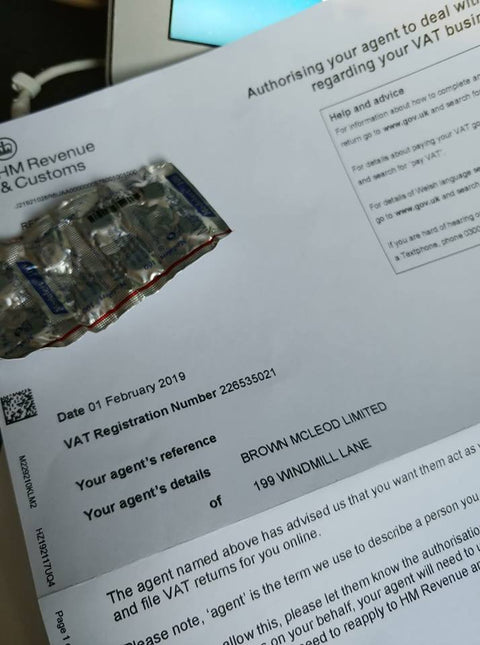The Lingerie Addict runs a wonderful group on facebook where people ask many sensible questions about the business of buying undies. Today I got asked by someone from there "what's the difference between delivery charges, sales tax, VAT, and customs, and do you pay tax twice when you order stuff from the USA going to the EU?"
My first response was; oh gods, not international shipping, it's a nightmare!
Then I sat down and wrote down a few points of what I've managed to grasp over the years. I'm not expert at this so it's a bit cursy and in all honesty I've never fully grappled with the nature of the US tax system. Feel free to fill in any gaps you can! Oh, and no, you don't pay two lots of tax when buying internationally.
- Unless you’re a VERY big brand, the delivery charges cover . . . delivery - which may involve some of the staffing and packaging cost of that, but shipping alone can be very expensive, especially from the USA because, don’t know, infrastructure there seems a bit screwed or something.
- Delivery charges come down the bigger the brand you are because like everything else, more volume = less cost per individual wotsit.
- You have to be at least a medium-sized company (i.e. bigger than 90% of companies) to be able to access shipping methods that include taxes etc usually, unless you ship via a platform that sorts this (if you’re biggish on eBay I think you can get that)
- No-one can reliably deliver to Russia, For Reasons.
- In the EU retailers have to show they delivered. In the USA, consumer protections vary from state to state; if you pay by PayPal they're usually on the side of the customer.
- Unless you're a big brand, the prices of your goods outside your country varies depending on exchange rates set by whoever the customer uses to pay with. We sometimes end up refunding folks more or less than they paid originally if there's a big change over the course of a few weeks. It's nothing to do with taxes. You payment provider may also charge you for making them deal with cross-currency transactions.

Pascoe, aged 21, totally helps with the paperwork.
- Sales taxes and VAT operate completely differently and as a result, do everyone’s heads in.
- Customs and import duties are separate to sales tax and VAT.
- Sales taxes are only applied on check-out, based on where the parcel goes to. If you’re buying from outside the US you don’t pay sales tax.
Europeans mostly think sales tax is nuts. - Value Added Tax is applied to every applicable consumer goods purchase within the EU (different countries exclude slightly different products); the amount is fixed based on the origin of the parcel instead, the UK is currently at 20% VAT as standard, none-luxury food and children clothes being the notable exclusions.
US folks mostly think VAT is nuts. - Because most shopping software is designed for sales tax, it is almost impossible not to charge the same amount to EU and none-EU customers; most software just doesn't allow it.
- When buying in the UK from countries outside the EU, you will get hit by; VAT at 20%, an import duty based on the nature of the goods you have bought, and a ridiculous admin fee for the privilege of someone charging you.
They used to let a lot of small parcels in without this but in recent years it’s nigh on impossible to avoid. - When buying in the US from other countries, you now have a greatly increased “de minimis”, an amount under which they apparently can’t be arsed to charge you, so most of the time you no longer get charged unless you’ve ordered something high into the 3 figure range.
- We think the Canadians are also going to get let off import duties for stuff MADE in the EU under CETA, but it doesn't seem to be quite hammered out yet.
- Sales tax goes to . . . I can’t remember, I think it’s the local government in the USA.
- Import duties and VAT go to the national government in the country that you are living in/buying from/getting delivered to.
- Import duties vary wildly depending on the item and the country of origin and the country of delivery but broadly speaking they float around the 10% mark.
- Admin fees go to the accursed courier/delivery people.
- You can, in some circumstances, avoid paying VAT - for example, some of my disability-related products are exempt assuming I can demonstrate I am actually ill in the event that HMRC checks the paperwork.
- Businesses have our own complicated lot of shenanigans around working out how much vat we reclaim and how much to send to the government. It's admin heavy, turns us into the tax collectors and is arguably a regressive tax.
Also, my cats wage war on the paperwork for it, because they are tiny adorable monsters. - Most of the time the process to reclaim it is complex, not applicable and/or not worth it for individuals.
- Never campaign for vat-free products as it can make the price go up - because businesses cannot reclaim the cost of the vat involved in supplies for manufacturing these. Campaign for the EU to allow products that have been VAT-able to be zero-rated. This is a complicated point that tends to get missed in fights about tampon/menstrual product VAT.

Made in the UK Van Doren boned suspender belt, using fabric from Latvia, shown with Miss Mandalay bra set, usually made in Tunisia, using fabric made in China. Spend a moment admiring the amount of taxes, import duties and VAT accounting that go into producing one small outfit! - If we hard Brexit, all bets are off, I'm not planning on bringing anything in from Mid-March until we know what the hell is going on. We could face HUGELY increased prices, a bad exchange rate and enormous delays. At the moment, we may even find ourselves unable to trade at all as we haven't organised terms with WTO and nothing else has been agreed. YAY. I’ll be hiding in Zurich if you need me.
- The rest of the EU will continue to operate as above (please insert your nations VAT rate and exclusions).
Have a lovely day and feel free to search our blog for more fun VAT chat!



